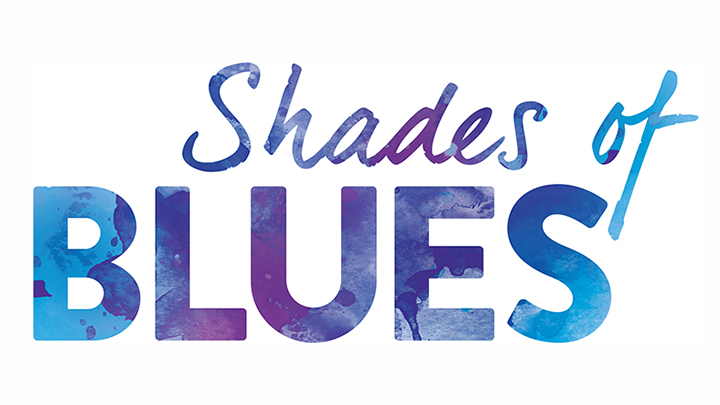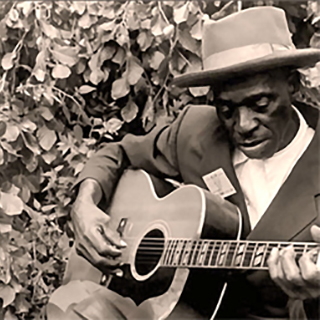By Michelle Davis
What’s your favorite shade of the blues? That might be difficult to answer because this musical genre has so many variations. Since its birth in the late 1800s in Mississippi, the music has evolved into different types or subgenres. Although they share the same basic elements of classic blues, they have unique characteristics that set them apart. Let’s take a quick look at a few of these styles. (Another way of talking about blues styles is by region, and for a geographic tour of the sounds of blues, see "Regional Blues Styles.")
Country Blues: If you like your blues stripped down and unplugged, country blues might be for you. Also known as folk blues or rural blues, this style features acoustic guitar and vocals, and was made famous by stars like Charley Patton from Mississippi and Blind Lemon Jefferson in Texas.
Gospel Blues: Thomas Dorsey, the “father of black gospel music,” started out playing blues and boogie-woogie piano and performing under the name “Georgia Tom.” But after losing his baby and wife during childbirth, he turned to gospel music, pioneering gospel blues in the late 1920s by injecting spirituals with blues and jazz styles and rhythms. What truly sets gospel blues apart is its religious lyrics—making it a subgenre defined more by its message than its instrumentation. One of the most famous artists of early gospel blues was Blind Willie Johnson, who was also highly regarded for his slide guitar playing (using a tube or other object to press the strings). In the late 1950s and early ’60s, the fervent and impassioned flair of gospel blues would lay the foundation for soul music
Sliding into the Blues
Blind Willie Johnson’s style in blues guitar playing began decades before. It was first known as bottleneck guitar playing. African American guitarists would put their ring finger down the neck of a beer bottle, then smash the body of the bottle against a hard surface, leaving the glass tube or neck of the bottle on their fingers. They would then slide this up and down their guitar strings. Early on, they also used copper and brass pipe, cut to the length of their finger. All these objects gave the guitar strings unique sounds. Of course, later on, companies manufactured both glass and metal tubes called “slides” specifically for this purpose!
Boogie-Woogie: The piano and energetic rhythm star in this up-tempo and improvisational style in which the pianist’s left hand plays a rhythmic bass pattern while the right hand plays melody. The subgenre gained its name and fame with Clarence “Pinetop” Smith’s 1927 song "Pinetop’s Boogie Woogie" (the first boogie-woogie ever recorded) and it remained popular through the 1940s. Its percussive patterns and energetic performances inspired early rock ‘n’ roll artists like Chuck Berry. And it has continued to get toes tapping and influence music. Hear it in "Cleanin’ Up the Town" by the Bus Boys from the 1984 film Ghostbusters.
Blended Blues
Sometimes blues songs blend elements from different genres. Listen to "Stormy Blues" performed by Billie Holiday in 1936. As the song begins, what genre do you hear? A good old boogie-woogie. When Billie Holiday starts to sing, though, the song transitions into a classic 12-bar blues pattern.
Jazz Blues: Jazz tunes that use the structure and other melodic elements of the blues are known as jazz blues. Many popular jazz singers have incorporated jazz blues into their repertoire. Singer Billie Holiday, for example, performed in this style quite often, as did alto sax player Charlie Parker.
Desert Blues: Desert blues, in a way, brings the blues full circle. This modern style blends deeply rooted West African musical traditions (which influenced the development of the blues when enslaved Africans were brought to the United States beginning in the 16th century) with more modern sounds from blues and other musical genres. Contemporary desert blues was first popularized in North America by Ali Farka Touré in the 1990s. His son, Vieux Farka Touré, continues the tradition today, along with Mali-based artists like Tinariwen.
Eagle Eye Cherry, Vernon Reid, David Barnes, James "Blood" Ulmer sings song by legendary bluesman J.B. Lenoir
Avant-Garde Blues: True to its name, avant-garde blues daringly pushes the boundaries of blues, incorporating a wide variety of stylistic effects or improvisations in both instrument-playing and vocals. This modern style includes many innovative players, but two notable examples are James "Blood" Ulmer, who uses a jagged playing style, and Captain Beefheart.


